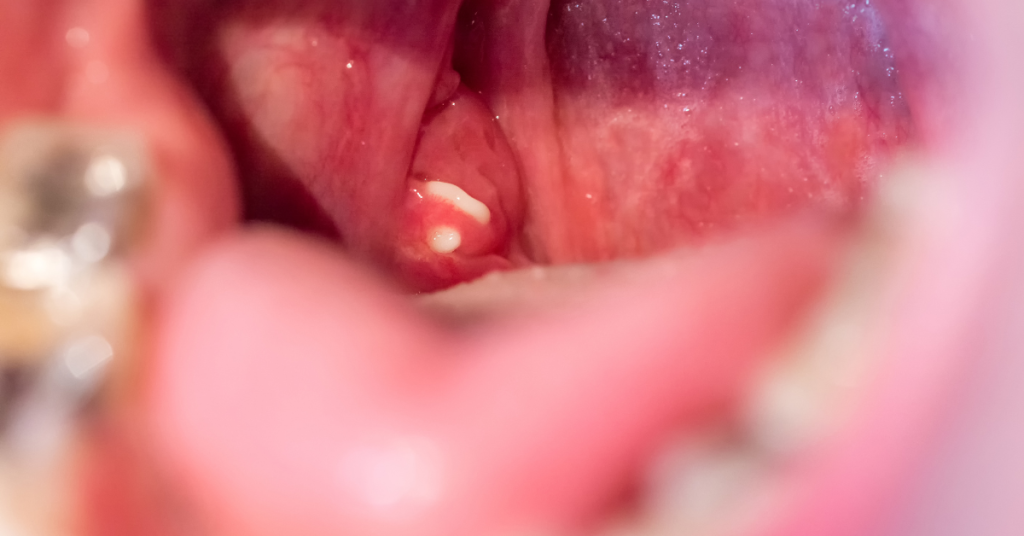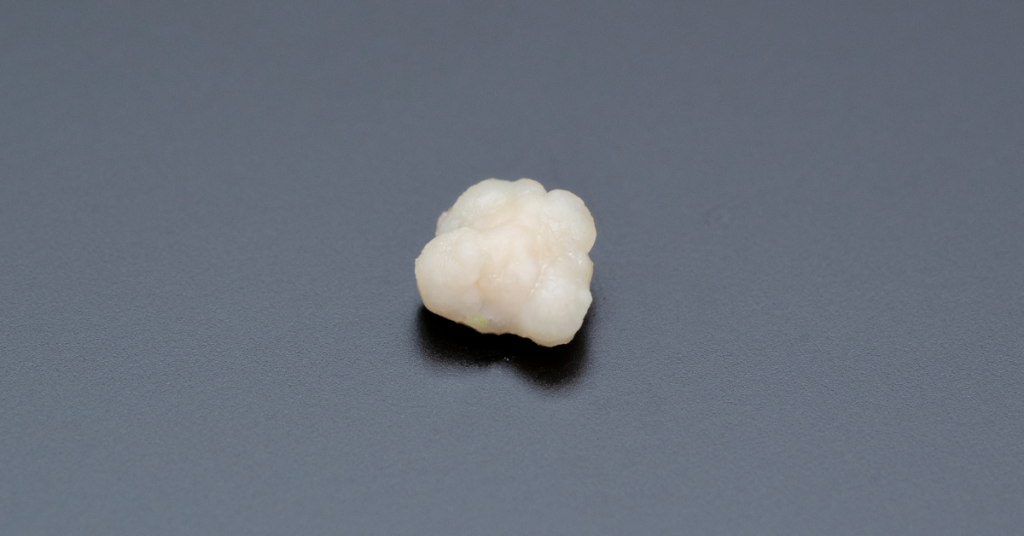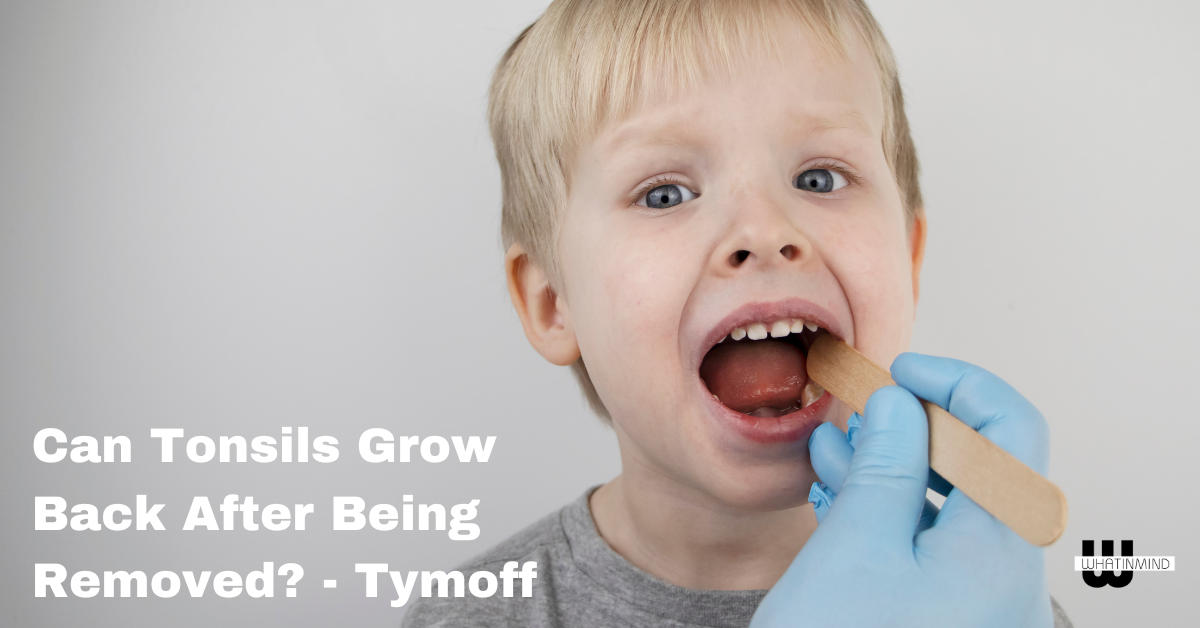Can Tonsils Grow Back After Being Removed? – Tymoff
The question of whether tonsils can regenerate post-tonsillectomy has long intrigued medical professionals and patients alike. While the removal of tonsils is a common procedure, the possibility of their reappearance raises intriguing questions about the human body’s capacity for regeneration. Understanding the underlying mechanisms behind this phenomenon and the factors that may influence it is vital for both medical practitioners and individuals who have undergone tonsillectomies. Let’s explore the complexities of tonsil regrowth and the implications it holds for medical practice and patient care.
Table of Contents
Tonsillectomy Procedure Explained
The tonsillectomy procedure is a surgical operation aimed at the removal of the tonsils, which are two small masses of tissue located at the back of the throat. After undergoing a tonsillectomy, patients typically experience a recovery process that involves managing pain, preventing infection, and ensuring proper healing. It is essential to follow post-surgery care instructions provided by healthcare professionals to promote a smooth recovery.
During the recovery process, patients may experience discomfort, throat pain, and difficulty swallowing. It is important to adhere to prescribed pain medications and maintain a soft diet to aid in healing. Adequate rest and hydration are also crucial components of the recovery period.
Post-surgery care involves keeping the throat area clean to prevent infections. Gargling with salt water and avoiding strenuous activities can help reduce the risk of complications. Regular follow-up appointments with healthcare providers are necessary to monitor healing progress and address any concerns. By following the recommended recovery process and post-surgery care guidelines, patients can enhance their healing and minimize potential risks associated with a tonsillectomy.
Tonsils Regrowth Mechanism

Following a tonsillectomy, the process of tonsil regrowth involves the regeneration of lymphatic tissues in the throat. Tonsil regrowth theories suggest that residual lymphatic tissue left behind during the tonsillectomy may lead to regrowth. This theory is supported by cases where incomplete removal of the tonsils resulted in regrowth. Additionally, some researchers propose that the body’s natural healing response to the surgical site may trigger the regrowth of tonsils.
To prevent tonsil regrowth, surgeons aim for complete removal of the tonsils during the initial procedure. Careful examination and removal of all tonsillar tissue reduce the chances of regrowth. In addition, post-operative follow-up is vital to monitor any signs of regrowth. In cases where regrowth is detected early, appropriate medical intervention can be initiated promptly.
Regrowth prevention strategies also include educating patients on post-operative care to minimize inflammation and infection, both of which could potentially contribute to regrowth. Ultimately, understanding the mechanisms of tonsil regrowth and implementing effective prevention strategies are essential in managing patients who have undergone tonsillectomy.
Factors Influencing Tonsil Regrowth
The regrowth potential of tonsils post-removal is influenced by various factors such as the completeness of the initial surgical procedure, the technique used during the operation, and the age of the individual undergoing the tonsillectomy. Understanding these factors is vital in determining the likelihood of tonsil regrowth and in determining the appropriate course of action post-surgery. Factors like the presence of residual tonsil tissue or the regenerative capacity of the tonsillar crypt epithelium can impact the recurrence of tonsil tissue.
Regrowth Potential Factors
Research has revealed several key factors that may influence the regrowth potential of tonsils following their removal. Regrowth frequency analysis indicates that regrowth can occur in a small percentage of cases, highlighting the importance of understanding tonsil regrowth prevention strategies. Tonsil regrowth risk factors include incomplete removal of the tonsils, a regrowth-prone genetic predisposition, or the presence of residual lymphatic tissue.
To mitigate these risks, healthcare providers implement recurrence prevention strategies such as ensuring the complete removal of tonsil tissue during surgery, genetic screening for regrowth susceptibility, and close postoperative monitoring. By identifying and addressing these factors, medical professionals can work towards reducing the likelihood of tonsil regrowth and enhancing patient outcomes.
Surgical Technique Impact
Surgical techniques play a significant role in influencing the likelihood of tonsil regrowth post-removal, with precise and thorough removal being important in minimizing the potential for regrowth. Impact evaluation of surgical advances shows that the following factors can influence regrowth:
- Precision: The meticulous removal of all tonsil tissue reduces the chances of regrowth.
- Technological Advancements: Utilizing advanced surgical tools can enhance the precision of the procedure.
- Thoroughness: Ensuring complete extraction of the tonsils leaves no tissue that could trigger regrowth.
- Specialized Training: Surgeons with specialized training in tonsillectomy techniques are better equipped to minimize the risk of regrowth.
Age and Regrowth
Age is a significant factor influencing the likelihood of tonsil regrowth following removal surgery. Younger individuals, particularly children, have a higher regrowth likelihood compared to adults. This is because tonsils play a more important role in the immune system during childhood, leading to potential regrowth. Studies show that the recurrence risk decreases with age, with adults experiencing tonsil regrowth less frequently than pediatric patients.
However, even in adults, there remains a slight possibility of tonsil regrowth due to the presence of residual lymphatic tissue. Understanding the age factor in tonsil regrowth is essential for healthcare providers when discussing treatment options and potential outcomes with patients undergoing tonsillectomy.
Rare Cases of Tonsil Regrowth
Instances of tonsil regrowth post-tonsillectomy are exceedingly rare, with only a few documented cases in medical literature. When regrowth does occur, it raises important considerations regarding the completeness of the initial surgical procedure and the potential for complications. These unusual occurrences underscore the need for close monitoring and thorough follow-up care after tonsil removal surgeries.
Uncommon Occurrence
In rare circumstances, the phenomenon of tonsil regrowth post-removal has been observed, albeit infrequently documented in medical literature. Understanding the uncommon occurrence of tonsil regrowth is vital for patients and healthcare providers. Here are some key points to take into account:
- Patients may experience regrowth due to residual tissue left during the initial surgery.
- Infections or inflammation post-surgery can stimulate regrowth.
- Genetic predisposition may play a role in the regrowth of tonsils.
- Inadequate surgical techniques or incomplete removal can increase the chances of regrowth.
Being aware of these factors can aid in better regrowth prevention strategies and post-operative care, ensuring the best patient outcomes.
Medical Implications
The medical implications of rare cases of tonsil regrowth post-removal highlight the importance of thorough surgical techniques and vigilant post-operative monitoring. While tonsil regrowth after removal is uncommon, it can lead to complications and recurrence. Proper post-surgery monitoring is vital to detect any signs of regrowth early on.
In cases where tonsils do reappear, there are risks associated with the need for a second surgical intervention. Patients should be informed about the possibility of rare regrowth and the significance of regular follow-ups with their healthcare provider. By staying vigilant and proactive in monitoring post-operative progress, healthcare professionals can address any potential regrowth promptly, ensuring the best possible outcomes for patients.
Tonsil Regrowth Prevention Tips
Implementing proper post-operative care measures can greatly reduce the risk of tonsil regrowth after the removal surgery. To prevent tonsil regrowth effectively, consider the following tips:

- Maintain Good Oral Hygiene: Regularly brush and floss your teeth to prevent infections that could lead to regrowth.
- Stay Hydrated: Drink plenty of water to keep the throat moist and prevent irritation that may promote regrowth.
- Avoid Smoking and Alcohol: These substances can irritate the throat and hinder the healing process, increasing the chances of regrowth.
- Follow Doctor’s Recommendations: Adhere to the post-operative care instructions provided by your healthcare provider to ensure proper healing and reduce the risk of regrowth.
Seeking Medical Advice and Monitoring
For optimum post-operative care and to monitor the healing process effectively, it is important to promptly seek medical advice and adhere to scheduled follow-up appointments. After tonsillectomy, it is vital to consult with healthcare professionals for guidance on pain management, signs of infection, and proper wound care. Medical consultation guarantees that any complications are addressed promptly, reducing the risk of potential issues such as excessive bleeding or infection.
Continuous monitoring by healthcare providers allows for the assessment of the healing progress and the early detection of any complications that may arise. Follow-up appointments allow doctors to evaluate the surgical site, make sure of proper healing, and address any concerns or questions the patient may have. Through regular check-ups, healthcare professionals can provide personalized care and guidance based on the individual’s recovery process.
Conclusion: Can Tonsils Truly Regrow?
Upon thorough examination of scientific evidence and medical literature, the phenomenon of tonsil regrowth post-tonsillectomy remains a subject of scrutiny and debate within the healthcare community. While some anecdotal cases suggest regrowth, scientific consensus leans towards tonsils not growing back once removed. However, myths persist, leading to confusion among patients. The following points summarize the current understanding:
- Tonsil regrowth myths: Despite rare cases claiming tonsil regrowth, scientific studies and medical experts largely refute these claims.
- Regrowth risk factors: Factors such as incomplete removal, regrowth of lymphatic tissue rather than true tonsil tissue, or the development of tonsillar tissue remnants may contribute to perceived regrowth.
- Patient education: Clear communication with patients post-tonsillectomy is essential to dispel myths and manage expectations.
- Follow-up care: Regular follow-ups post-tonsillectomy can help monitor for any signs of regrowth and address concerns promptly.
Frequently Asked Questions
What Are the Potential Complications or Risks Associated With a Tonsillectomy Procedure?
Potential complications of a tonsillectomy include bleeding, infection, and reactions to anesthesia. Recovery time varies but typically ranges from 1-2 weeks. Risks like dehydration and respiratory issues can occur. Regrowth prevention methods are rare.
How Long Does It Typically Take for Tonsils to Regrow After Being Removed?
Recovery time post-tonsil removal varies but regrowth rate is generally low. Advanced surgical techniques reduce recurrence risk. Vigilance in follow-up care aids in monitoring any regrowth. Understanding individual cases is essential for effective prevention strategies.
Are There Any Genetic Factors That May Influence the Likelihood of Tonsil Regrowth?
Genetic factors play a role in tonsil regrowth prevention. Understanding the individual’s genetic predisposition can aid in evaluating the likelihood of regrowth post-tonsillectomy. This knowledge can guide personalized preventive measures to reduce the chances of reoccurrence.
Can Tonsil Regrowth Occur in Adults Who Have Had Their Tonsils Removed as Children?
Tonsil regrowth in adults post-tonsillectomy is rare but possible. Complications may arise, such as bleeding or infection. Genetic factors could influence the likelihood of regrowth, though more research is needed for definitive conclusions.
Are There Any Alternative Treatments or Interventions Available for Preventing Tonsil Regrowth After a Tonsillectomy?
Herbal remedies and alternative interventions like laser treatments or radiofrequency ablation have shown potential in preventing tonsil regrowth post-tonsillectomy. These prevention methods offer natural, non-invasive solutions for individuals seeking to avoid tonsil regrowth.
Conclusion
In summary, while the possibility of tonsils regrowing after removal is rare, it can occur due to various factors. Vigilance and monitoring post-surgery are essential in detecting any regrowth early on. By following proper preventive measures and seeking medical advice when needed, individuals can minimize the risk of tonsil regrowth. Remember, ‘prevention is better than cure’ when it comes to ensuring a successful tonsillectomy procedure.






